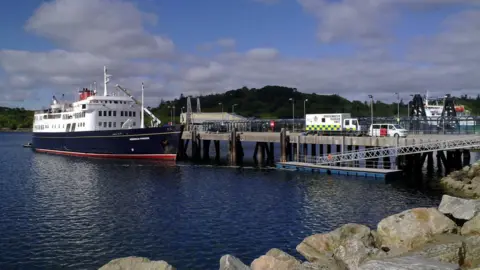Depopulation in 'mainly rural and island council areas'
 BBC
BBCRural and island communities were worst affected by depopulation in Scotland, according to new figures.
The National Records of Scotland split the country into almost 7,000 small areas and analysed how they changed.
Parts of the west of Scotland also suffered significant depopulation with Inverclyde seeing the biggest decrease in a 10-year period.
Across Scotland, the median age - the age at which half the people are older and half younger - also increased.
An area of Falkirk was revealed as the oldest population in Scotland with a median age of 72.
Ruchill in Glasgow, which is home to many students, had the lowest median at 20 years, meaning half of residents were younger than 20 years of age.
Glasgow, like most big cities, saw population increases in most of its areas over the past decade.
Orkney saw increases in most of its areas while Shetland's were slightly decreasing in population, although the report noted they have the least data areas of any local authority.
In places such as Argyll and Bute, North Lanarkshire and Angus, more areas were decreasing in population than increasing.
The median age of people in rural and island communities was also increasing at a faster rate than in cities. Increases in the average median age were highest in:
- Na h-Eileanan Siar - +4.1 years
- Clackmannanshire - +3.9 years
- Scottish Borders - +3.7 years
- Argyll and Bute - + 3.6 years
Every local authority area in Scotland saw an increase in overall median age except Dundee, which had a small decline in median age.
Inverclyde also had the highest percentage of its population living in the most deprived areas in the country, and this was closely followed by Glasgow.
East Renfrewshire and Edinburgh had the highest percentages of their populations living in the least deprived areas.
